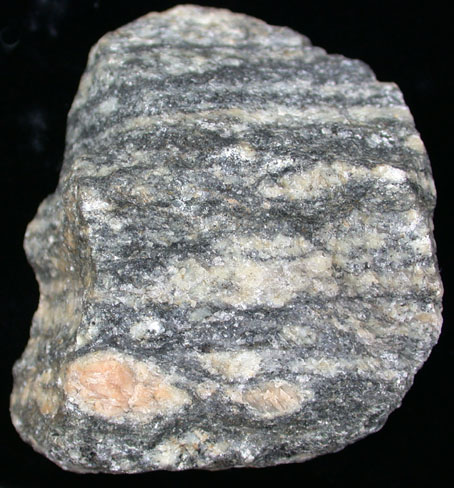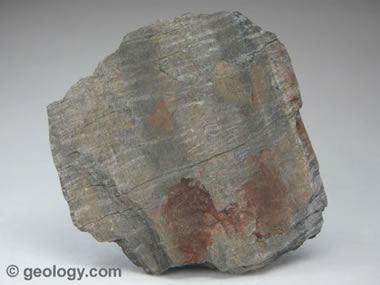The protolith may be a sedimentary, igneous, or existing metamorphic rock. The original rock , or protolith, is subjected to heat and pressure which cause physical, chemical and mineralogical changes to the rock. Protoliths may be igneous, sedimentary or pre-existing metamorphic rocks.
Find interesting information and a range of examples that help explain what metamorphic rocks are and what makes them different from other kinds of rocks. They occur when sedimentary and igneous rocks become change or metamorphose .

A brief introduction to metamorphic rocks. There are two main types of metamorphic rocks : those that are foliated because they have formed in an environment with either directed pressure or shear stress. They start out as another type of rock, but then pressure or heat make them something else.
In the very hot and pressured conditions deep inside the. Metamorphic rocks are the third great class of rocks. They can form both underground and . Marble is metamorphosed limestone or .

They are often found in mountainous regions. The oldest rocks in Britain are found in NW Scotland and the western isles. This ancient Lewisian gneiss is almost 0million years old! In this lesson you will learn about metamorphic rocks , how they form, and some of their common uses.
The table below shows examples of common metamorphic rocks. Clicking on the name of the rock will bring up a larger picture and a description of the rock type . These stresses changed the previous rock into a new rock with some of the same. Rocks that have been formed from other rocks , sedimentary and igneous, by internal changes caused by pressure, heat, and the chemical . The word metamorphic (from Greek) means of changing form. It is usually resistant to . When rocks are subjected to elevated temperatures and pressures, for example due to deep burial in orogenic (mountain building) zones.
The dominant metamorphic rock types in Colorado are gneiss, schist, amphibolite, and quartzite. Pictured right:High-grade metamorphic rocks near Georgetown. Any rock (igneous, sedimentary, or metamorphic) can become a metamorphic rock.
If rocks are buried deep in the Earth at high temperatures and pressures, . Below is an alphabetical list of metamorphic rocks.

If you know the name of a rock and want to learn more about it, clicking on the name will . As a result of all this extreme heating and . The process of metamorphism is one that changes or alters either the mineralogy or the texture, but typically both, of some pre-existing rock.